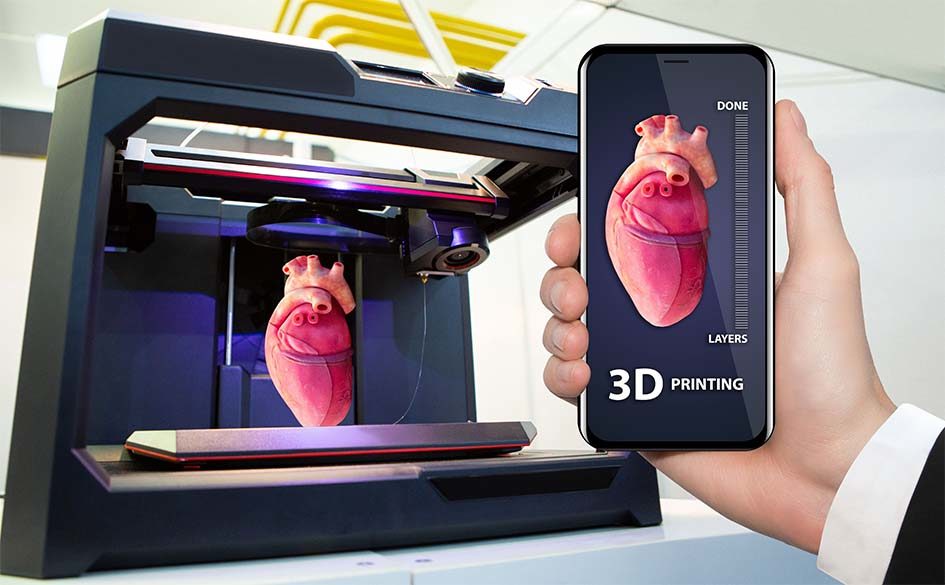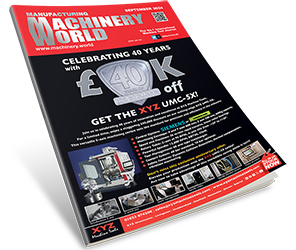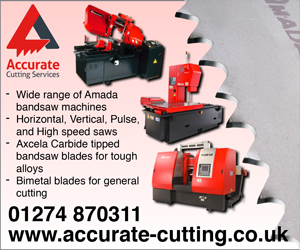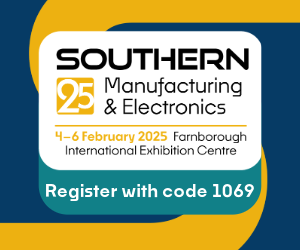As disruptive trends go, 3D printing – also called additive manufacturing – is often touted as a technique to rival injection moulding. But rather than viewing them as competing technologies, used for the right application they actually complement each other very well, emphasises Nigel Flowers UK managing director of Sumitomo (SHI) Demag.
In the last six years the global 3D printing market has more than doubled. By 2020, analysts estimate the sector will be worth US$3.1bn. In comparison, the global plastics moulding market is forecast to reach US$690.bn by 2023.[1] “While we cannot knock the level of innovation happening in the 3D printing space, in reality additive manufacturing is not the universal panacea it’s made out to be. Right now it continues to perform strongest for prototyping rather than mass manufacturing,” says Nigel.
Looking to the future, there are exciting developments in both markets. Whether the current global trade wars and currency fluctuations will accelerate demand for onsite production remains to be seen. Yet the idea that 3D printers are about to overthrow traditional manufacturing techniques – including moulding, forging, casting, and even subtractive CNC manufacturing – is simply scaremongering. There is space for all of these technologies, notes Nigel. The key for any manufacturer is to make a well-informed decision based on a number of criteria.
Examining production volumes, cost, barriers to entry and the future of part customisation, Nigel offers some counterarguments to help bust the myths that one technology is going to win over the other.
Myth one: Economies of scale
Cost is obviously a big factor when considering which technology to opt for, especially in the production of plastic parts. For manufacturing components in high volumes, 3D printing today is currently not fast or cost effective enough to produce precision parts in large quantities. Where 3D printing is beneficial is for prototyping and for generating customised parts in low volumes.
Functionality also plays a big part. Just because you can print anything you want, it doesn’t mean that the design or materials will perform any better than the current methodology of injection moulding.
For several years now the medical sector has successfully used 3D printing to produce very bespoke components. Among them prosthetics, implants, hip replacements, hearing aids and even dentures. For these individual parts, injection moulding would not be a financially viable option due to the cost of creating a mould tool.
Similarly, aerospace manufacturers are embracing 3D printing to upgrade components and create replacement parts for maintenance, repair and overhaul (MRO) which is big business. In a report issued by Airbus, MRO spend will double to over US$120 billion per year in the next two decades, which involves upgrading the existing fleet of passenger aircraft[2]. For those parts which may have a long lead time, a complicated supply chain or no longer be in production, 3D printing offers a viable and agile alternative to the aerospace sector.
When designing a prototype using injection moulding, the process can again be quite lengthy. Whereas a 3D printer will let you create the part using the end material, injection moulders will typically use foam and adapt the design until it’s approved and the tool can be designed and tested. Here, an industrial 3D printer is often used to scope out and fine-tune the part, which can then be used as a blueprint to design the mould tool.
The tipping point for injection moulding will come relatively quickly once mass-production ramps up. Calculating the payback would involve comparing the unit costs and production time for 3D printing and offsetting this against the cost for tooling development, making, testing and shipping the tool, plus the new unit costs and any assembly. Typically, a contract mass moulder producing electronic casings estimates a ROI of 10,000 parts.
Myth two: Environmental footprint
The sustainability credentials of 3D printing are often inconclusive. While some advocates say printing locally saves on transportation costs, gauging the true environmental impact is inherently more complex.
Take for example energy consumption. While injection moulding machines, particularly all-electric systems, continue to cut energy use – the latest Sumitomo (SHI) Demag IntElect range for example uses the same amount of energy as switching on a household kettle – some 3D printing processes used 50-100 times more electricity than injection moulding machines. Several years ago, a study by Loughborough academics, dubbed the Atkins Project, did find that the in-use phase through lightweighting, particularly components used by the aerospace industry, saved on fuel costs. These savings more than compensated for the energy used during production, discovered researchers.
Many people equate 3D printing with less material waste. Yet in rapid prototyping where the development cycle could involve printing multiple versions, waste is still high. Additionally, because of the mix of different materials, grinding up and recycling printed parts that have been 3D printed can be challenging.
In injection moulding, providing a regrind mix falls within an acceptable range and the molecular weight of the polymer hasn’t been compromised and meets the specifications, the mix, typically no more than 10% to virgin polymer, can be run through a machine. However, moulders still remain cautious using reground plastics, especially for precision parts. The reason being even subtle changes to the original material could affect the shrinkage, cause flash or change the cosmetic appearance.
One sustainability area that additive manufacturing can assist with is extending the life of products, printing obsolete moulded parts if they are no longer in production. Where there are complex geometries and features, 3D printing can help manufacture parts that may previously have been considered impossible.
Myth three: Real time manufacturing
Printing on demand is one thing. Take for example a medical situation where surgeons pop next door to print a heart valve. Although data is involved in the process, given the time it takes to print one item, can this really be defined as real-time manufacturing?
Instead, smart factories with fleets of injection moulding machines, connected and capturing data to achieve speed and scale is probably the most revolutionary example of real time manufacturing, especially when production schedules can be automatically adjusted based on stock levels. UK in-house moulders are especially adept at managing production volumes and contract moulders use Kanban systems to ensure stock levels don’t run dry and that there are no bottlenecks in the supply chain.
Of course, being able to produce components closer to home rather than relying on imports makes good business sense, especially during times of geopolitical tension.
Many domestic manufacturers have pulled forward their reshoring plans and have switched to local moulding providers. The key driver has been faster turnaround of components with, Tier 1-4 suppliers eager to protect their business from volatile trade policies. This is certainly the case in the UK, where Brexit, the weak pound, the potential for increased red tape and disruptions to supply chains has been the trigger to reassess operations and productivity bottlenecks.
Obviously the import of raw materials needs to be factored in. It’s here where both technologies can benefit from having some stock in reserve. Not only does it give some extra business security, it reassures customers who are reliant on components that their orders can be fulfilled.
Myth four: Repeatability
For mass volume production runs, repeatability is non-negotiable. Today’s injection moulding machines are designed to deliver quality parts, consistently, with tight tolerances and a high cosmetic finish, often in just a few seconds.
Moulded parts can be created thousands to millions of times in succession. For component reliability, such as an automotive part, this repeatability is critical.
If decorative features are required, In Mould Labelling, where the polymer fuses with the label inside the mould, can produce a good, repeatable finish. In many instances, this technology is used in combination with stack moulds to increase output while maintaining repeatability and quality. As well as packaging, this technique is widely used when moulding computer and mobile phone devices, as well as door panels and trims.
Similarly, the use of digital files means that 3D printing can deliver repeatability, albeit in smaller quantities.
Myth five: Quality
For short run commodity parts that don’t have critical dimensions or demanding mechanical-performance requirements, additive manufacturing can deliver functional parts. However, finish remains a key sticking point right now. Because the parts are printed in layers, the surface finish can be a bit rough and ready. Currently, most 3D components need some post -processing work to smooth the edges, adding to the overall processing time.
In plastic injection moulding, the finish and surface texture can be created by the mould tools itself. However, once moulded the part may need to undergo additional post production finishes, such as degating, removing excess material if the resin bleeds out, and potentially stamping and decorating. Most of this process can be automated within the moulding cell.
Myth six: Traceability
Traceability of 3D printed parts has been a key concern, particularly for industries like aerospace and medical. Counterfeiting has also been raised as a key issue, which can significantly impact brand value. Additionally, ensuring protection of intellectual property (IP) is another challenge.
To address this, software and hardware needs to be fully connected and the 3D print supply chain completely transparent. Developments include printing QR codes and embedding digital files into the component as it’s printed. Although in fledgling stages, this can help with the checking of part authenticity, as well as maintaining a secure and compliant supply chain.
Traceability in injection moulding is more advanced, with most machinery suppliers providing secure data capture and documentation. Recently, Sumitomo (SHI) Demag developed an In Mould Decorating (IMD) cell, whereby each moulded part can be issued with a Unique Device Identifier (UDI), with all processing data held securely by a manufacturing executive system (MES). It represents a colossal change in how multiple components are individually issued with a UDI.
Myth 7: Strength
Variations in strength and durability will depend on the materials used. However, taking PET as an example, a 3D printer will create a part in layers. Therefore, the 2D contour might be strong, but the bonding between the layers will not be comparable to a solid mass that has been moulded.
The key test of strength is dependent on the tensile properties. Before embarking on any moulding or printing project, organisations need to understand fully how the material will perform long-term within the application itself. How it might react to heat. How the molecular structure will perform. This takes skill and a good understanding of chemical engineering.
A time and a place
To summarise, Nigel emphasises that there’s room for both techniques and technologies. “3D printing is great for iterating designs and we are increasingly seeing moulders using them to test out new concepts and create tooling prototypes. Rather that pitching the two against each other, recognise that they each have distinct advantages and that the level of innovation will continue to accelerate for both.”






